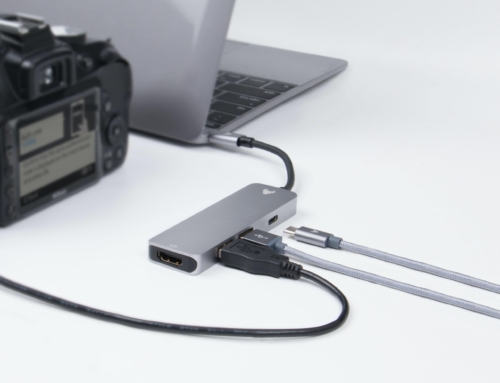“At no level—early childhood, K-12, [or] higher ed—are we even in the top 10 internationally,” says former United States Secretary of Education Arne Duncan.
What Is EdTech?
Many articles on the internet describe EdTech as a genre of software that facilitates the learning process and student outcomes in a traditional educational setting. Some even broaden this definition to include the use of hardware in a classroom or lecture hall. While partially true, these narrow definitions sell short the full potential of EdTech; they fail to look beyond just the classroom and don ‘t properly verbalize the two-way interaction between the fields of Education and Technology.
Without much previous knowledge of EdTech, it may seem quite obvious from the composition of the word itself what to expect. On one hand, we have “Ed,” an abbreviation of “Education,” and on the other, we have “Tech,” the abbreviated form of “Technology.” It would then seem that EdTech is merely the result of adding the two together. However, EdTech is not just a simple sum, but rather a synthesis of Education and Technology. As with any synthesis of ideas, we shouldn ‘t expect to see something familiar as the product of two familiar components. Rather, we are bound to witness the creation of a third category, all of its own.
In reality, EdTech is the harmonization of its two parts. Where long-standing, classical educational theory and methods and the rapidly advancing field of technology have previously clashed with each other, EdTech, in its true essence, seeks to reconcile the differences between the two and uses the strengths of one to complement the other. In this three-part article series, we ‘ll break down why both the fields of Education and Technology need EdTech, what today ‘s tech legends say about the matter, and the future of this exciting new industry.
Why Education Needs (Modern) EdTech
Although the term was coined in recent years, it ‘s not accurate to say that EdTech is a modern invention in and of itself. According to the Oxford Dictionary, technology is simply “the application of scientific knowledge for practical purposes, especially in industry.” If used for the purpose of teaching, even archaic tools like the abacus could technically be considered educational technology (although it would go without saying that a modern school using an abacus would be long overdue for an upgrade to their repertoire). This analogy may seem humorous, but, in a very real sense, American schools are holding onto equally antiquated forms of EdTech.
As we mentioned in our earlier article, traditional schools in the U.S. are still utilizing teaching methods that date back to medieval times and learning tools that have been around for over a millennium, even though newer, more effective technologies have been developed. Most educational professionals have observed this phenomenon and state that the educational system is long overdue for an upgrade in terms of both theory and execution. However, despite countless attempts to reform education, starting with the “A Nation at Risk” campaign in the 1980s, the American educational system remains more disaffected by technological advances than any other institution in our nation.
According to Arne Duncan, the former United States Secretary of Education under President Obama, the current educational system in the U.S. was designed approximately 100 years ago to create an assembly line of workers who would drive the growth of our economy. By making secondary education in high school mandatory, the United States witnessed incredible growth and has been riding on the momentum ever since. However, the world is radically different since that time and “other nations are now out-educating, out-investing, and out-innovating the US.”
“At no level—early childhood, K-12, higher ed—are we even in the top 10 internationally,” says Duncan. “And that should scare us. It is scary and does not bode well for the future.”
Research recently compiled by the World Economic Forum supports Duncan ‘s arguments. One of the largest international student aptitude tests, PISA (Programme for International Student Assessment), is performed once every three years and measures reading ability, math, and science literacy, in addition to other key skills among 15-year-olds in both developed and developing countries. The most recent PISA results, from 2015, ranked the U.S. in 38th place out of 71 countries in math and 24th in science. Amid the 35 members of the Organization for Economic Cooperation and Development, which sponsors the PISA initiative, the U.S. ranked 30th in math and 19th in science. Indeed, this should scare us.
If you still weren ‘t convinced that the United States ‘ education system is broken, it turns out that we spend more on education than other countries, yet still fall way behind the average in terms of performance. Data from the Organization for Economic Cooperation and Development shows the U.S. spent an average of $16,268 a year to educate a pupil from primary through tertiary education, while the global average was just $10,759. However, according to the National Center on Education and the Economy (NCEE), the average student in Singapore is 3.5 years ahead of U.S. students in math, 1.5 years ahead in reading and 2.5 in science. This is even more shocking when considering that the majority of Singapore ‘s population was illiterate just 50 years ago.
How EdTech Solves the Problem
Few modern institutions in America have been as resistant to technological advances as education. The reason why American schools have failed to catch up has been a hot topic, with many theories proposed, such as low wages for educators, complacency at the organizational level, bipartisanship in Washington, mismanagement of funds, inequality and lack of standardization between school districts, and a host of other possible factors. Regardless of whether or not we will all agree on why our educational system is broken, EdTech poses the quickest and most cost-effective solution to this problem.
Even as politicians continue to drag their feet and disagree on how exactly to reform to our educational system, modern EdTech provides us with a standardized, affordable method of delivering an up-to-date education to students. Through EdTech solutions like EaaS (Education as a Service) models, K-12 schools and universities can strengthen their existing offerings and provide students with the specific skills they need to succeed in the workplace, without jumping through bureaucratic hoops that completely overhauling the educational system would require. Instead, the use of browser-based labs, educational apps on tablets, and other interactive forms of EdTech can be implemented side-by-side with existing curriculum in the classroom.
Stay tuned for Part II of “EdTech is the Future, Here’s Why,” in which we discuss why Technology can benefit from EdTech and what today’s tech leaders have to say about America’s aging educational system.





